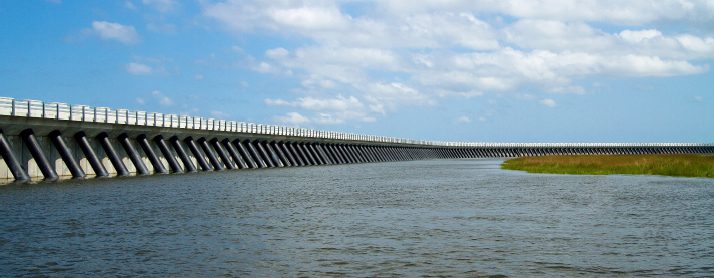Advocacy Alerts
Army Corps Sea Wall Proposal: The PSC’s Concerns and Recommendations
preservation-admin , July 7, 2020
* The following content was emailed to PSC members and newsletter subscribers ahead of the June 19, 2020 public comment deadline.

In April, the US Army Corps of Engineers (USACE) released their draft report on the Charleston Peninsula Coastal Flood Risk Management Study for public review. Since 2018, the Army Corps has been evaluating a range of flood protections, from living shorelines to levees and walls, and is now putting forth their recommendations on long-term solutions for storm surge on the peninsula.
As the single largest infrastructure investment in Charleston’s history, public input is imperative. A project this significant and technical can seem overwhelming; to help, the PSC has outlined our big picture concerns followed by concise recommendations that we encourage you to echo in your comments to the Army Corps.
PSC CONCERNS AND RECOMMENDATIONS
Historic Resources: The plan acknowledges there will be adverse effects to historic resources, including potential harm from construction activity, as well as visual intrusions on the historic district that would diminish its significance and integrity.
Urge the Army Corps to undertake the actions necessary to minimize harm to the Old and Historic District, as required under the National Historic Preservation Act.
Natural Resources: The Army Corps believes the findings of the Environmental Assessment have not triggered the threshold to conduct a full Environmental Impact Statement (EIS).
Advocate that the Army Corps conduct an EIS that will provide detailed investigation of the project’s consequences for Charleston’s waterways, marshes, and creeks.
Visual Impacts: The proposed sea wall and breakwater structure would permanently alter the views and relationship of the city to the water. To date, the Army Corps has provided no visual reference for what the wall will look like and how it will alter the quality of our experience of Charleston.
Request that the Army Corps provide 3D data visualizations to help the community understand the magnitude of visual impacts caused by the sea wall and breakwater before any decisions are made.
Maintenance and Operability: The proposed wall would include an extensive network of floodgates that must be opened and closed for the wall to function.
Call on the Army Corps to provide a detailed plan and cost analysis for annual operation and long-term maintenance of the wall.
Neighborhood Impacts: Neighborhoods like Rosemont, Bridgeview, and Gadsdenborough are outside of the wall’s proposed boundaries presenting major accessibility and livability concerns for these areas. The plan must be fair and work for all residents.
Ask the Army Corps to provide specific information on how these neighborhoods will be affected in the event of a major storm, as well as how accessibility and mobility will be impacted when the system is closed.
Indirect Impacts: The Army Corps has not yet presented models assessing the possible effects of deflected wave energy on neighboring areas like James Island, West Ashley and Mount Pleasant.
Request that the Army Corps undertake a thorough study to assess the adverse impacts to surrounding communities early in the process.
Dutch Dialogues: Our community recently undertook a major planning exercise with the Dutch Dialogues to determine the right water management solutions for Charleston. The Final Report cautions against single-purpose solutions and hard edges that prevent the natural ebb and flow of Charleston’s water systems.
Call on the Army Corps to better explain how this proposal fits within the framework of the Dutch Dialogues recommendations and overall flood mitigation priorities for the city.
